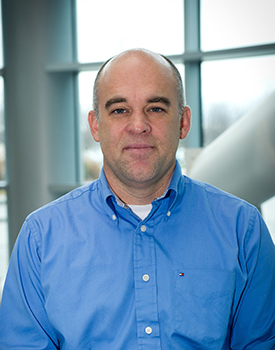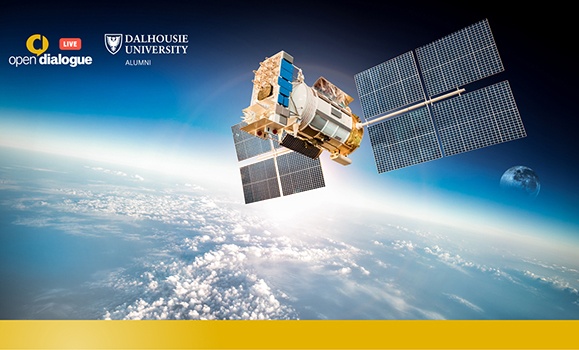Philip Moscovitch – May 12, 2022
Satellites that weigh less than a bag of potatoes. Low-cost, reusable rockets. A new generation of onboard computers in space. The planned return of humans to the moon.
Put it all together, and you’ve got a new space race — one in which Canadian researchers and companies are poised to play an important role. “You can go on the web right now and buy components to build your own CubeSat (miniature satellite),” says engineer Tony Pellerin of the Canadian Space Agency’s Space Science and Technology Branch. “You drag and drop them into a basket, pay with your credit card, and they ship it to your house. So, you can build your own spacecraft. The accessibility is there, which it wasn’t 10 years ago.”
“You can go on the web right now and buy components to build your own CubeSat (miniature satellite),” says engineer Tony Pellerin of the Canadian Space Agency’s Space Science and Technology Branch. “You drag and drop them into a basket, pay with your credit card, and they ship it to your house. So, you can build your own spacecraft. The accessibility is there, which it wasn’t 10 years ago.”
Pellerin and fellow engineer Arad Gharagozli (MASc’22) will be panelists at Dalhousie’s next Open Dialogue Live event, The Space Race of the 21st Century. The panel takes place online and in person as part of Alumni Days on May 26 at 6:30 p.m. The event is open to all members of the Dal community as well as the general public.
There are currently some 5,000 satellites in orbit, but according to the UCS satellite database that number could rise to 100,000 by the end of the decade. The satellite explosion, says Astronomy.com, is driven by a constellation of factors, including smaller spacecraft that can be inexpensively launched into low orbits.
CubeSats are the smallest of these satellites, weighing in at some 3-5 kg, Pellerin says. (Compare that to the once-standard 500 kg satellites.) He is currently working with universities across the country, including Dalhousie, on 15 CubeSat projects slated to launch later this year. They are designed for a range of applications, including monitoring potato growth in P.E.I. and using lasers to calibrate ground telescopes. The Dalhousie team’s contribution is LORIS — a satellite that will extract more information from images by overlaying infrared and visible range data. LORIS comes out of the Dalhousie Space Systems Lab, founded in 2017 by space entrepreneur Gharagozli who founded the Halifax-based firm GALAXIA. “Aerospace is a very conservative industry in its nature,” he says, “but you can see a new trend of companies coming up, and all they want to do is take risks.”
LORIS comes out of the Dalhousie Space Systems Lab, founded in 2017 by space entrepreneur Gharagozli who founded the Halifax-based firm GALAXIA. “Aerospace is a very conservative industry in its nature,” he says, “but you can see a new trend of companies coming up, and all they want to do is take risks.”
GALAXIA, Gharagozli explains, is “building satellites that are capable of processing information in space and are also capable of having other people build applications for them to be to be used in space.” Advances in technology and lower-cost missions have made the small onboard computers GALAXIA is building feasible.
In the past, Gharagozli says, “If you were building a computer for a satellite, it would have been for a $2 billion mission, for example. Now, you’re looking at a mission that would cost somewhere between $200,000 and $400,000, so that really changes the playing field.”
Pellerin agrees, saying advances in science and technology have “opened the door to a lot of newcomers.” Combine that with excitement about the Artemis program, which will see the return of humans to the moon, and the planned Lunar Gateway orbiting station, and you’ve got a lot of “excitement in the [space] community.”
Dalhousie’s Open Dialogue Live series brings the community together for thought-provoking conversation and supports Dal’s vital role in sparking dialogue around important issues. All Open Dialogue Live conversations are free, but registration is required for both livestream and in-person attendees.
Register to attend: The Space Race of the 21st Century
The talk will take place May 26 in the McInnes Room in the Dalhousie Student Union Building, 6136 University Ave. The livestream will be available via Dalhousie Alumni and Friends Facebook Live and Dalhousie YouTube.
The panelists:
Dal News welcomes discussion from members of the Dalhousie community and beyond, but urge comment writers to be respectful and refrain from personal attacks. False or unsubstantiated allegations, libellous statements and offensive language are not allowed. External links must be appropriate and relevant to the subject being discussed.
We encourage commenters to use their real first and last names.
Please note that comments that appear on the site are not the opinion of Dal News or Dalhousie University but only of the comment writer. The editors reserve the right to post, or not to post comments, edit or not edit, at their discretion.
Halifax, Nova Scotia, Canada B3H 4R2
1-902-494-2211
Agricultural Campus
Truro, Nova Scotia, Canada B2N 5E3
1-902-893-6600
Dalhousie University
Halifax, Nova Scotia, Canada B3H 4R2
1.902.494.2211






